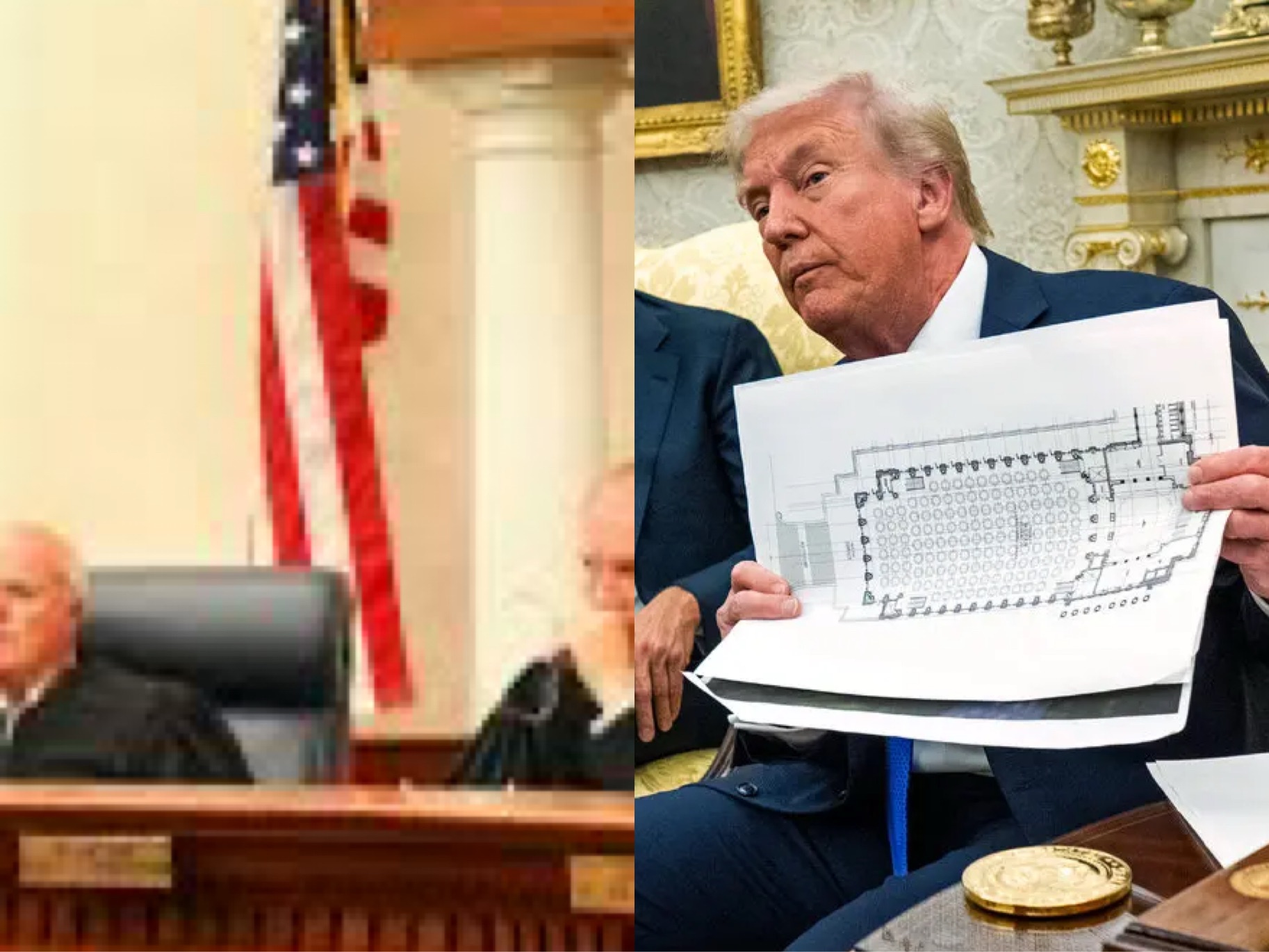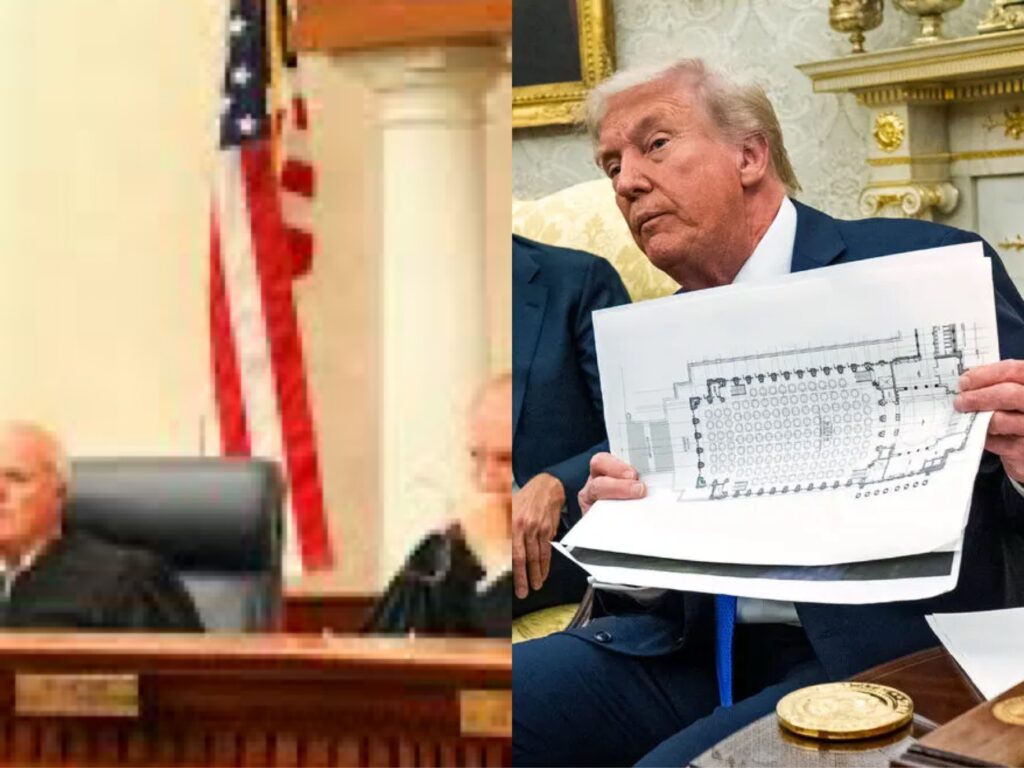NFL
Emergency Motion Filed to Halt Donald Trump’s Ballroom Construction After Alleged Demolition Violations by Congress and Supreme Court

Emergency Motion Filed to Halt Donald Trump’s Ballroom Construction After Alleged Demolition Violations: A Clash Over the White House’s Historic Legacy
November 24, 2025
In a dramatic escalation of tensions surrounding President Donald Trump’s ambitious White House renovation plans, a Virginia couple has filed an emergency motion in federal court to slam the brakes on a $300 million ballroom project. The legal challenge, lodged just over a month ago, accuses the Trump administration of bulldozing through federal preservation laws in a rush to demolish the East Wing—a storied section of the executive mansion long synonymous with first ladies’ offices, state dinners, and public tours. While the motion didn’t arrive in time to save the wing from the wrecking ball, it has ignited a firestorm of debate over presidential power, historic integrity, and the boundaries of executive discretion.

The Demolition That Sparked Outrage
The controversy erupted in late October when photographs surfaced showing the East Wing reduced to rubble. What was once a hub of ceremonial pomp—housing portraits of first ladies, event planning suites, and the primary entrance for visitors—had been methodically dismantled in a matter of days. President Trump, who announced the ballroom initiative earlier in the year as a “grand upgrade” to accommodate larger galas and diplomatic receptions, initially downplayed the scope. In public statements, he assured skeptics that the 90,000-square-foot addition—nearly twice the size of the White House itself—would be built without disrupting existing structures.
But reality proved otherwise. By mid-October, public tours were abruptly canceled, and construction crews moved in with heavy machinery. The White House defended the swift action, with spokesperson Davis Ingle declaring that “President Trump has full legal authority to modernize, renovate, and beautify the White House—just like all of his predecessors did.” The administration even launched a dedicated webpage framing the project as the latest in a lineage of improvements dating back to John Adams’ original construction in 1800.
Critics, however, saw it differently. Preservationists decried the demolition as “historically reckless,” arguing it bypassed essential safeguards designed to protect national landmarks. The National Trust for Historic Preservation fired off a urgent letter to the National Park Service on October 22, imploring officials to “pause demolition until plans for the proposed ballroom go through the legally required public review processes.” Carol Quillen, the Trust’s president and CEO, warned that proceeding without oversight could set a dangerous precedent for other federal sites.
The Plaintiffs Step In: A Couple’s Stand Against the Steamroller
Enter Charles and Judith Voorhees, a retired couple from Arlington, Virginia, whose quiet life took a turn toward activism amid the dust clouds rising from Pennsylvania Avenue. On October 23, attorney Mark Denicore— a licensed engineer with a firm specializing in construction consulting—rushed their emergency motion into the U.S. District Court for the District of Columbia. The filing, which named President Trump and National Park Service Director Jessica Brown as defendants, sought a temporary restraining order to freeze all further work on the site.
In stark terms, the Voorheeses alleged that the administration had “unilaterally decoupled the demolition of the East Wing from the construction approval process,” effectively dodging reviews mandated by key statutes. At the heart of their case are two pillars of federal law: the National Capital Planning Act of 1952, which requires submission of major project plans to the National Capital Planning Commission for public scrutiny, and the National Historic Preservation Act, which demands consultation with bodies like the Commission of Fine Arts for any alterations to protected structures. The plaintiffs further claimed that no environmental impact assessments or heritage consultations had been conducted, labeling the entire endeavor a “violation of multiple federal preservation and planning laws.”
Denicore, speaking to Politico shortly after filing, captured the frustration fueling the suit: “I feel like a lot of people want to do something about this, but nothing seems to be happening. I threw that together as fast as I could to try to get it filed as fast as I could.” Tragically for the plaintiffs, timing was not on their side. By the afternoon of the filing, reports confirmed the East Wing was already a heap of debris, rendering any halt to demolition moot. The motion now pivots to blocking the construction phase, with the couple arguing they have standing as taxpayers and concerned citizens whose proximity to the site subjects them to the project’s aesthetic and environmental fallout.
Legal experts are divided on the motion’s prospects. While the White House grounds enjoy certain exemptions under preservation laws—explicitly shielding the executive mansion, Capitol, and Supreme Court buildings from some procedural hurdles—the Voorheeses’ attorney contends that the ballroom’s scale and location demand full compliance. “This isn’t a minor tweak; it’s a massive new footprint on sacred ground,” Denicore emphasized.
Whispers of Broader Involvement: Congress, Courts, and Unverified Claims
The emergency motion’s ripple effects have extended far beyond the courtroom, fueling speculation about deeper institutional entanglements. Social media buzzed with unconfirmed reports of a $10 billion lawsuit from the National Trust for Historic Preservation, complete with dramatic headlines claiming an “emergency injunction” from the Supreme Court itself. Threads posts and viral shares alleged that the high court had intervened to halt the project amid violations of environmental and heritage protections, painting a picture of the judiciary and Congress uniting against executive overreach.
Yet, these narratives appear to be the stuff of online exaggeration. No official records indicate Supreme Court involvement, and the Trust’s actions have been limited to advocacy letters rather than megabuck litigation. Congressional murmurs exist—Democrats on the House Oversight Committee have called for hearings into the project’s funding and compliance—but no formal motions or votes have materialized. As one Capitol Hill aide quipped anonymously to E&E News, “We’re watching from the sidelines; it’s a White House headache until it hits the budget.”
The absence of swift legislative or judicial backstops underscores a key tension: the presidency’s broad latitude over its own residence. Past commanders-in-chief, from Truman’s gut renovation in the 1940s to Reagan’s Oval Office tweaks, have invoked similar prerogatives. Trump’s ballroom, however, stands out for its audacity—and its timing, just months into his second term.
What’s Next for the Ballroom—and the White House?
As of November 24, the construction site hums with activity, reportedly ahead of schedule according to anonymous White House sources cited by NPR. Renderings released by the administration depict a opulent, crystal-chandeliered space capable of hosting 1,000 guests, complete with state-of-the-art AV systems and flexible partitioning for everything from black-tie fundraisers to international summits. Proponents hail it as a forward-looking enhancement; detractors fear it erodes the White House’s intimate, storied charm.
The Voorheeses’ motion remains pending, with a hearing slated for early December. If granted, it could force a rare public reckoning, compelling the administration to submit blueprints to the Commission of Fine Arts and National Capital Planning Commission. Failure to do so might invite further suits, potentially from environmental groups or D.C. locals irked by traffic snarls and noise.
In the end, this saga transcends bricks and mortar. It’s a referendum on stewardship: How much change is too much for America’s most iconic address? As President Trump himself might tweet, “The best is yet to come”—but for preservationists like the Voorheeses, the real question is whether that future honors the past. For now, the rubble of the East Wing serves as a stark reminder that even in the shadow of power, the law—and a determined couple from Virginia—can demand a pause.












